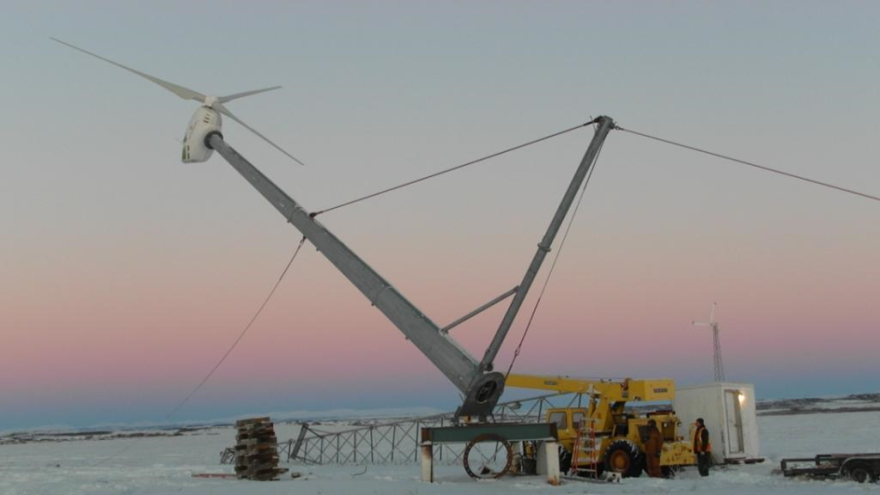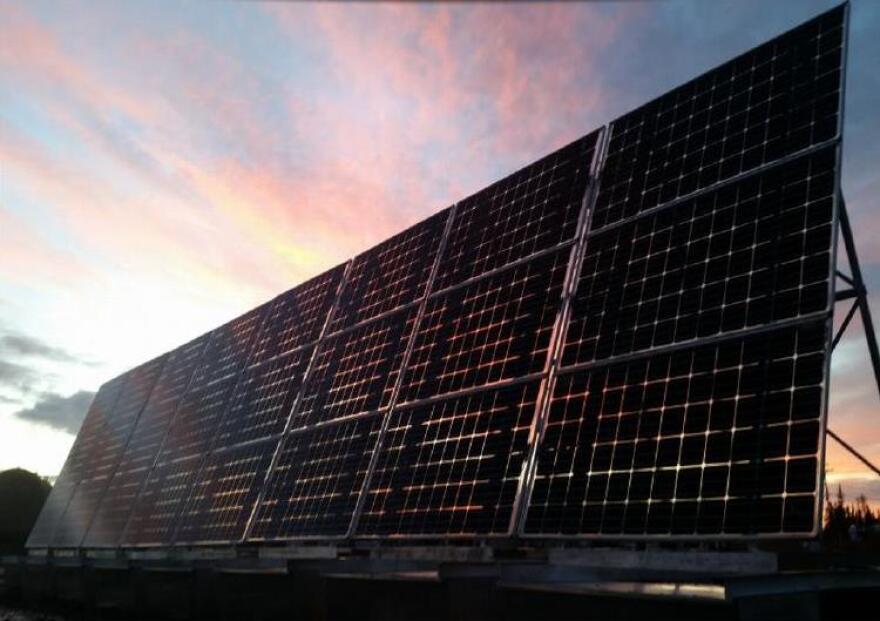Alaska’s rural communities are increasingly looking to wind, solar and biomass to reduce their use of expensive diesel fuel to generate heat and electricity. Residents talked about their efforts to use renewable energy sources at this week’s Rural Energy Conference in Fairbanks.
Galena saved more than a half-million dollars last year because a biomass-burning boiler and upgrades to its district heating system reduced diesel consumption by more than half.
Kotzebue cut the cost of heating its hospital by more than $40,000 dollars last year by using wind energy to displace diesel.
And 11 other communities in northwestern Alaska used solar energy to save more than a $190,000 that otherwise would’ve gone to buying the fossil fuel.
“Any and every community that’s paying a lot for diesel-generated electricity has a significant interest in this,” says renewable-energy expert Brian Hirsch. He says residents of those remote communities increasingly are embracing alternative sources of energy to offset the high cost of fuel that must be brought in by barge or air.

“You have a village of Noatak, where there’s no opportunity to barge fuel in,” he said. “You have to fly in every drop of diesel fuel. Their retail price for diesel fuel are over 10 dollars a gallon.”
Hirsch is a consultantwho’s been contracted by the NANA Regional Native Corporation to help 11 towns and villages in the Northwest Arctic Borough reduce fuel costs with solar power. He works with Ingemar Mathiasson, the Northwest Arctic Borough’s energy manager who says sharp fuel-price spikes motivated borough residents to try renewables.
“At 10 dollars a gallon or more, and electricity at 70 cents, 80 cents a kilowatt, it just became a survival issue.”
The town of Eagle also is using solar to reduce its use of diesel.

Meanwhile in Kotzebue, the area native association is using a different renewable, wind, to heat its regional hospital. Cory Uhlig, a senior project manager with the Alaska Native Tribal Health Consortium, says Maniilaq Association officials decided to try wind in 2012, when diesel prices were soaring – at about the same the local utility was erecting wind generators.
“They were burning over 160,000 gallons a year,” Uhlig said. “It’s a huge expense. That was killing them.”
Uhlig says the electric-powered boiler at the Maniilaq Health Center displaced about 28,000 gallons of diesel over the past year, its first year of operation. He says Maniilaq officials split the savings with Kotzebue Electric Association to pay for the wind power.

Yet another renewable, biomass, is enabling Galena and its school district to burn less diesel and more wood chips to heat the city’s educational complex.
“We’re burning somewhere around 50,000 gallons annually and about anywhere from – we’re learning, this is our first full year of operation, but – about 650 to 700 cords of wood,” he said.
Tim Kalke is general manager for sustainable energy with the local nonprofitthat’s partnered with the city, school district and a local tribal council to build and operate the biomass system. The $8 million system allows the district to avoid burning diesel on all but the coldest days, and to offset the cost of the fuel during the rest of the school year.
“We can run the wood by itself down to about 30, 35 below,” he said. “But after that, the wood subsidizes the rest of the energy.”
Kalke says processing the locally harvested timber into wood chips brings the cost of the biomass up to about the same as diesel – at least, for now.

“The price of oil is very volatile,” he said. “Just a little bit more of an increase and the wood starts to become the cheaper option.”
Regardless, Kalke says the project also provided jobs and, he hopes, the beginning of a wood-products industry. He says the $600,000 the partnership will spend stockpiling a three-year supply of timber is a better investment than buying overpriced fuel that goes up in smoke.



